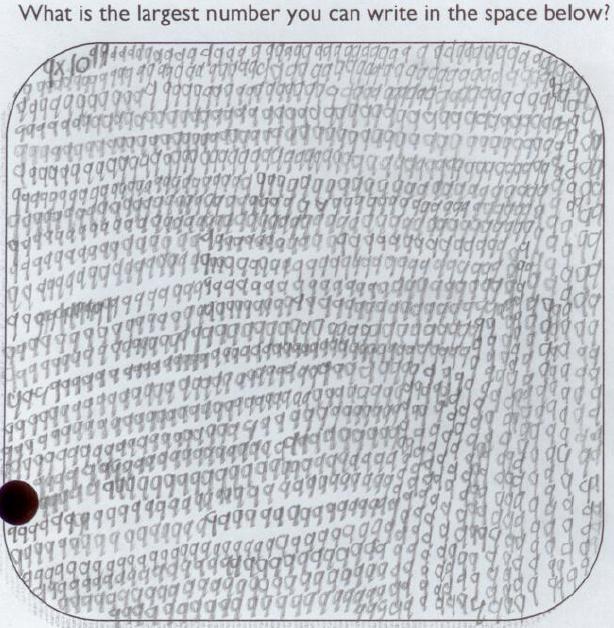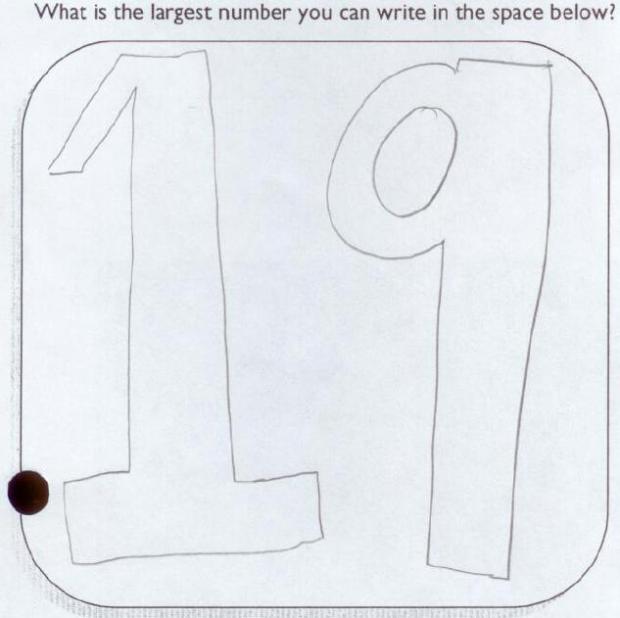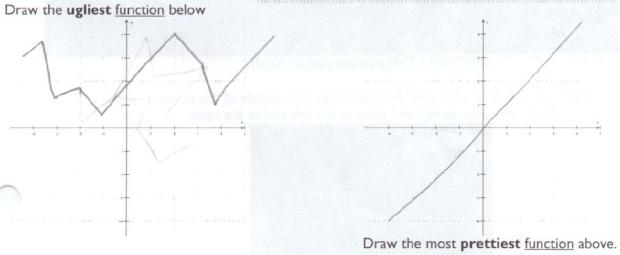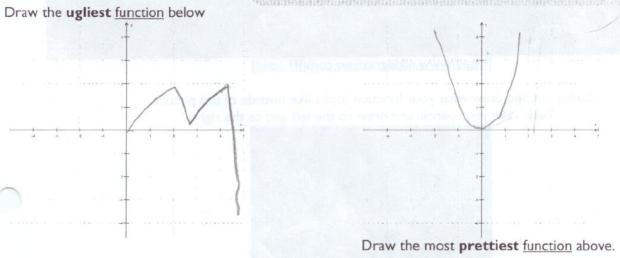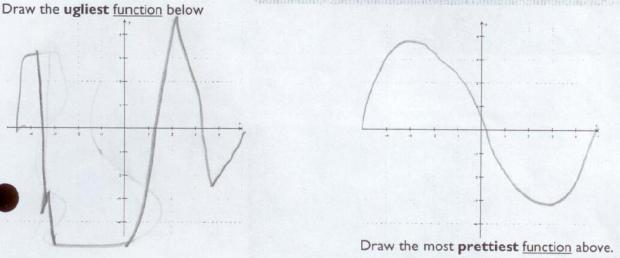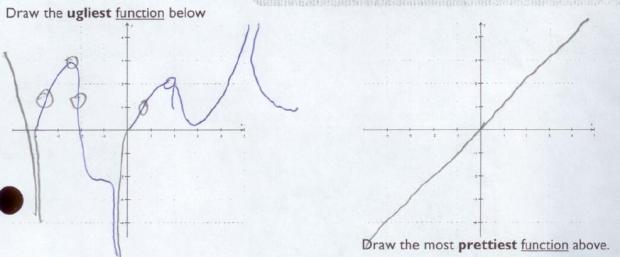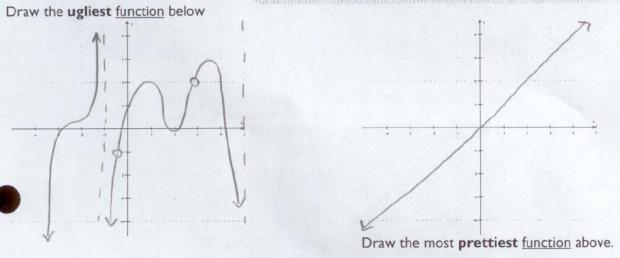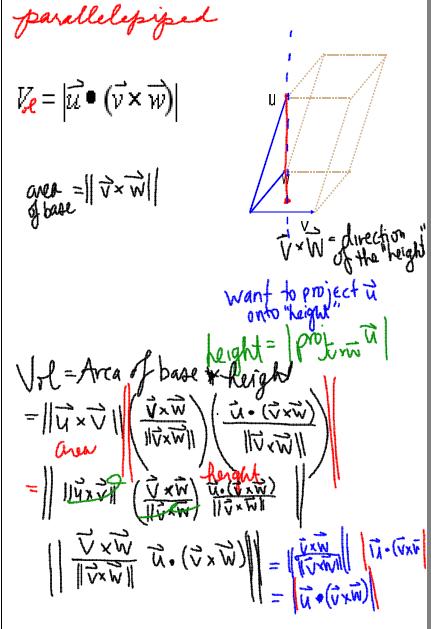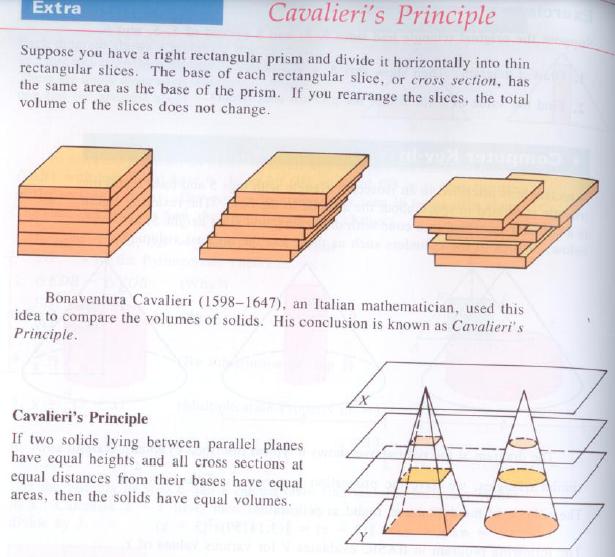I actually spend a long time crafting college recommendations. I start each one from scratch and I don’t cut and paste. Generally, the way I start the process is I think back about the student, and come up with a few adjectives that sort of define my mental picture of that student. I jot down any specific memories that might be special, interesting, or funny. (With my horrible memory, though, these are few and far between.) I then look through my gradebook and see how the student performed, and any improving trends or points where the student shined. Finally, I’ll look through the narrative comments that I write twice a year on the student.
There is one more thing, and it’s one of the most important things I do, when I write recommendations. I ask students to write a recommendation for themselves. I give them some guidelines. I’m paraphrasing, but it goes like this: “Don’t be modest. Do be specific. Do talk about your feelings about mathematics (and if they’ve evolved). Do talk about if you like math (and if you do, what is is about math that you like). Do tell me if you have a distinct or favorite memory from class. Do tell me if you worked outside of class with other students? Do tell me something you’re proud of.” Basically, they know themselves better than I know them. And they know details I may never know. Like how — for example — a friend might have called for math help at 10pm at night, and this kid spent an hour talking math on the phone.
(Some teachers make a form with narrative questions for students to fill out. I might switch to doing that, although there is something really nice about giving them the onus to determine what they feel is important. Not what I feel is important)
Here’s the three big things that I think are important in a recommendation:
- The recommendation should be specific, and full of details.
- The recommendation should paint a picture of the student — not be generic tripe.
- The recommendation should be honest– not hyperbolic.
It’s hard, though. Especially for the students who didn’t stand out in class academically. The middle of the pack students. But for those, I don’t lie or slightly puff up the truth. I focus on the character and fortitude of the student when the going got tough.
Some sample paragraphs from recs I’ve written — with names/details changed:
Ex. 1) Historically, most of my students in this class tend to work methodically and systematically, and think inside the box. Stu thinks in a way that I can’t fully understand: incredibly visually and incredibly intuitively. He can “see” things in a way different from the others—and even myself. It is incredibly helpful for Stu in problem solving—he often uses this intuition to make the crucial connection that leads to the solution. In the beginning of the year, Stu found it difficult to express his ideas in words, to translate what was going on in his mind to a clearly written solution. That is a struggle that most of my students go through, never having written a two page solution to a single problem before. However, as he has been asked to write more, his skills in this area have improved greatly. He now knows how to better express his ideas so that they are firmly grounded in the logic of mathematics and so they are understandable to a reader.
Ex. 2) Stu is also one of the most thoughtful, respectful, kind-hearted students I have encountered. When doing group work, he focuses the group on the task at hand and makes sure that everyone is on the same page. When entering the classroom, he always gives an upbeat greeting. He brings lightness and humor to our room. And when leaving, he says “thank you.” Honestly, what student consistently thanks their teacher after class?
Ex. 3) Stu works incredibly well with others in our small class. There is an emphasis on collaboration and working through ideas together. It is a class where students play off each other, help guide each other along, instead of me explaining everything to them. Although Stu almost always has his “a ha” moment before the others, he spends time making sure the others have that moment too. He is a natural leader of the class, propelling us forward without leaving anyone behind. Stu also grapples with new ideas, making sure he mulls them over to get a sense of how they fit into the larger scheme of things. When he asks questions, they usually either anticipate topics we’re about to cover, or drawing connections to topics we’ve previously covered. These questions raise the conceptual component of our class considerably, because they get all of us to think deeply about ideas.
Ex. 4) When I wrote in his first quarter comment that I should photocopy his notebook for my own records, I didn’t just mean that hyperbolically. Taking notes and learning how to do homework are skills that students tend to struggle with in 10th and 11th grade math classes. They aren’t skills that are explicitly taught. I decided that this year, I would spend some time teaching my Algebra II class these skills.
With that in mind, I flipped through my mental rolodex of previous Algebra II students; Stu’s name was the name that popped out at me. His organized and meticulous notes, his step-by-step homework, and his mature approach to my class were exemplars that I knew could help other students. I invited Stu to come to my class this year as a guest lecturer, to talk about the strategies he employed to be successful in Algebra II. He even met with our school’s learning specialist to help him organize his presentation – which was a success. Students really responded to his ideas, and I myself learned a thing or two about how some successful students work. (And, in fact, I did scan in a few pages of his notebook to show students what they should be striving for.)
Ex. 5) I was thrilled when Stu asked me to write a letter of recommendation for her college applications. I had the pleasure of teaching her in Algebra II last year at Packer Collegiate Institute, an independent high school in Brooklyn, New York. In this class, Stu impressed me, not just by her mathematical maturity, but also by the maturity with which she approached school. She is a serious student, and a serious intellect, who – I am paraphrasing her own words slightly – enjoys learning for the sake of learning, because it changes the way she sees the world. It is this attitude, where school is more than just an amalgam of exams but instead countless opportunities to learn new things, draw new connections, and be exposed to as much as possible as often as possible, which makes me certain that Stu will succeed in any institution she attends.
Ex. 6) In short, Stu had changed. Far from the more reserved Stu I had met at the start of the year, the new Stu took more risks in class, and found effective ways for him to learn the material. I don’t see this as simply the transformation of an Algebra II student. I see this as the intellectual maturation of Stu, and the transformation of a young man who has learned that his determination and his hard work can help him realize his awesome potential. He certainly did in Algebra II.

